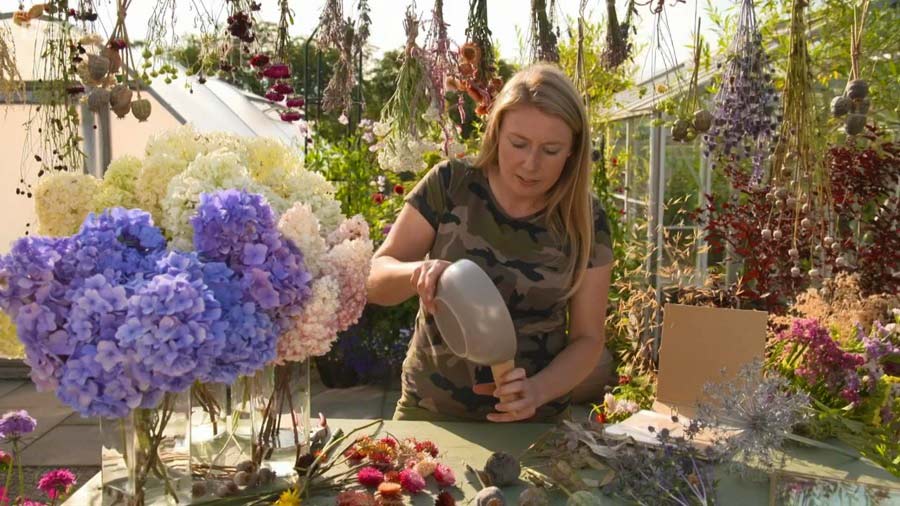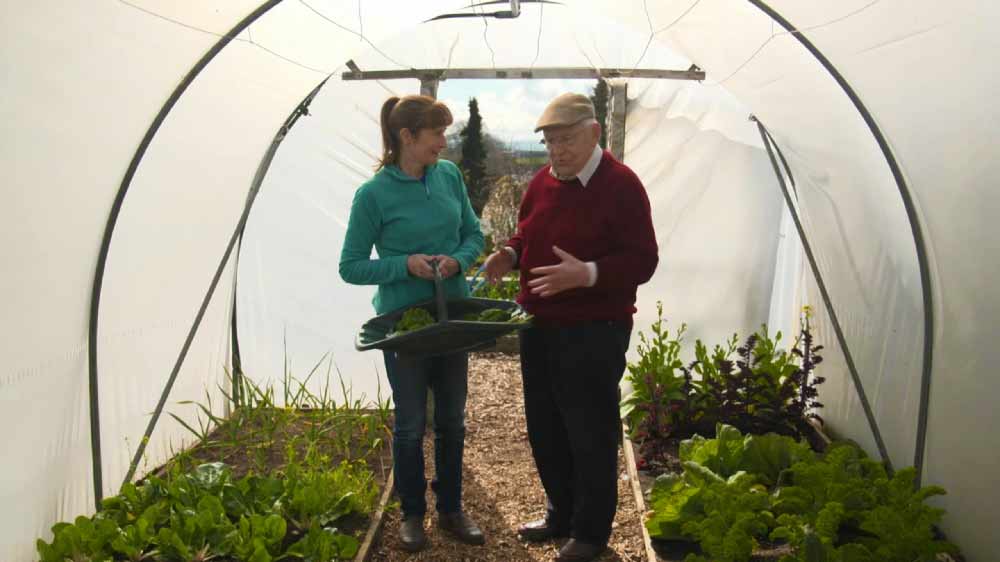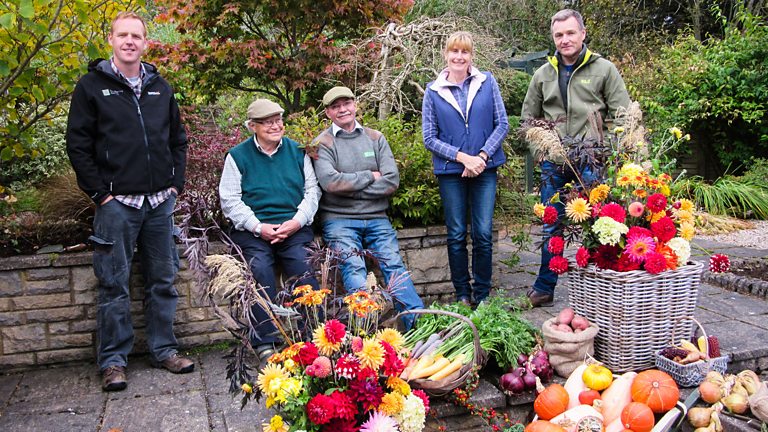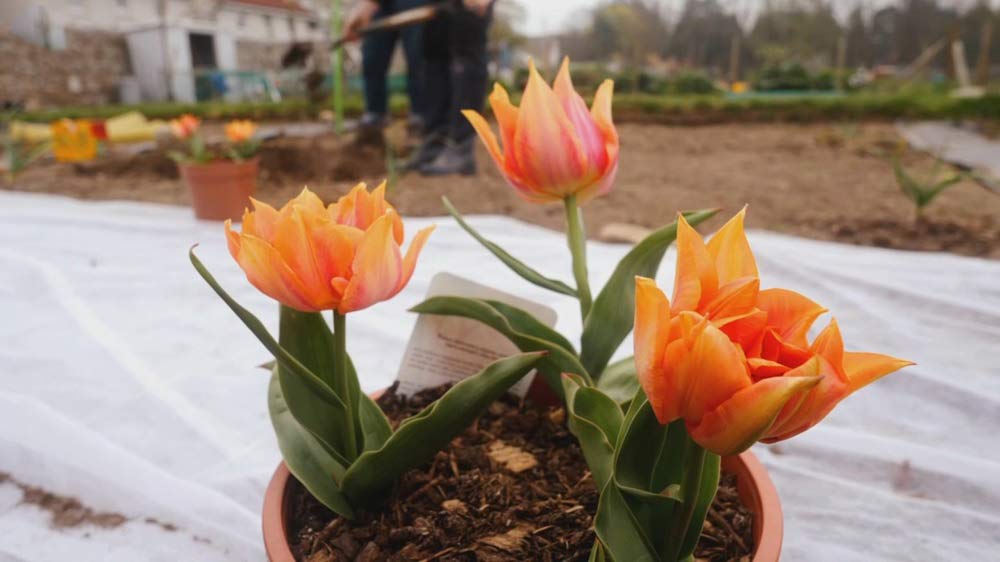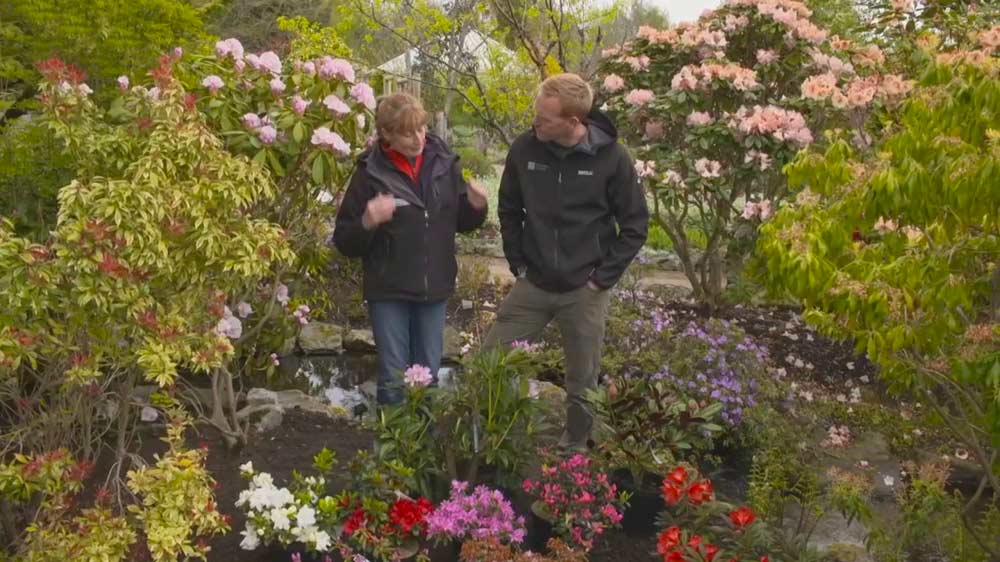Beechgrove Garden episode 14 2019: ‘To mow or not to mow’ – that is the question as Carole looks at traditional lawn care, while Brian continues maintenance of his no-mow meadow. Kirsty shows some on-trend indoor plant ideas to keep green fingers busy throughout the autumn and winter months.
At 25, Sophie McKilligan is the youngest allotment holder at Garthdee Allotments in Aberdeen and throughout this season, Carole has been guiding Sophie’s growing. In this gardening programme they access the harvest.
George visits Philip and Jennifer Bradley’s garden in Newton Stewart. Over 20 years the couple have transformed a field into a garden of informal rooms full of year-round colour. Including a ‘room’ packed with exotic specimens surprisingly thriving in the Scottish border’s climate.
The Beechgrove Garden episode 14 2019
Autumn Lawn Care
Carole and George were on the Main Lawn giving it some TLC for the autumn and winter ahead. There are 5 steps to the perfect lawn:
- Scarification. This means removing the thatch or dead material from the grass. George was using a scarifying machine to do this. Carole was using a springbok rake to briskly rake the surface. Scarification is best done in autumn rather than spring. The grass has been mown all summer and it helps to remove the dead trimmings which have gone deep into the lawn.
- Aeration. Next you should aerate the lawn. This can be done by pushing a hollow tine fork or garden fork every 6 inches into the lawn surface. If your lawn is large you can hire a machine to do this. This helps to relieve
compaction and get oxygen to the grass roots. Sharp sand can be brushed into the holes to help with drainage. Aeration should be done every 3 years with a hollow tine fork or every 2 years with a garden fork. - Feeding. Carole and George recommend using autumn lawn fertiliser. This is low in Nitrogen as you don’t want to encourage soft top growth which will easily be damaged by frosts. It is high in Potash for greening-up the lawn, and in Phosphates to encourage healthy roots. This will protect the grass from frost and icy conditions.
- Raise the mower blades. If you raise the mower blades, then there will be a longer sward to protect the lawn from winter weather.
- Switching. To avoid the risk of the lawn getting red thread or fusarium, use a bamboo cane or an old fishing rod to flick across the surface of the lawn when it is wet on dewy mornings.
No Mow Care
Kirsty and Brian were on the Orchard Lawn. Brian has made it his mission not to cut the grass at all this year. Brian’s No-Mow has had several benefits. No-mow gardening has encouraged wildlife and wildflowers into Beechgrove. It has looked great all summer and has been low maintenance. Kirsty suggested a ‘Living Lawn’ might be a good idea for next year. This is a halfway house between a fully wild area and a manicured lawn with a much lower sward. It means that kids can still play on it but you also get wildflowers growing, encouraging pollinators into the garden. We will be giving the ‘Living Lawn’ a try next year.
